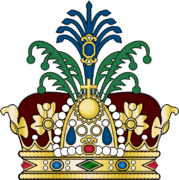Government of Burgundie: Difference between revisions
Tag: 2017 source edit |
Tag: 2017 source edit |
||
| (54 intermediate revisions by the same user not shown) | |||
| Line 1: | Line 1: | ||
{{wip}} | {{wip}} | ||
[[Burgundie]] is a {{ | {{Government of Burgundie}} | ||
[[Burgundie]] is a {{wp|Parliamentary system|parliamentary}} {{wp|representative democracy}}. A {{wp|constitutional monarchy}}, the country is organised as a {{wp|Decentralization|decentralised}} {{wp|unitary state}}. [[Burgundie]] can be described as a {{wp|consociational}} state. [[Burgundie|Burgoignesc]] politics and governance are characterised by a common striving for broad consensus on important issues, within both of the political community and society as a whole. The nation is under the sovereignty of a Great Prince, who in turn, serves the {{wpl|Pacta conventa}} of [[The Burgundies]]. The Government of Burgundie is a {{wpl|Representative democracy}}, served by {{wpl|congresses}} at local, provincial, and constituent country level. At the national level the [[Government_of_Burgundie#Legislative_Branch|Citizens Court of the National Assembly (Burg. La Assemblee de Ciutadans de l'Assemblee Nacional, ACAN)]] serves as the highest congress of the land. | |||
All political entities in Burgundie are governed through the concept that all government is local. The layered approach is an important part of Burgoignesc political culture. The sense of civic engagement in government is high. | All political entities in [[Burgundie]] are governed through the concept that all government is local. The layered approach is an important part of Burgoignesc political culture. The sense of civic engagement in government is high. | ||
== Administrative Divisions == | == Administrative Divisions == | ||
=== Municipal Government === | === Municipal Government === | ||
{{ | {{Further|Cities of Burgundie}} | ||
Historically municipalities in Burgundie derived their city rights from the rulers of the Kingdom of Dericania (''de jure'' the Emperor of the Levantines), by royal decree. However, as fiefdoms gave way to bourgeois trade hubs the power and rights of municipalities grew and royal charters gave way to popular charters around the 1860s. | Historically municipalities in [[Burgundie]] derived their city rights from the rulers of the Kingdom of Dericania (''de jure'' the Emperor of the Levantines), by royal decree. However, as fiefdoms gave way to bourgeois trade hubs the power and rights of municipalities grew and royal charters gave way to popular charters around the 1860s. | ||
{| class="wikitable" | {| class="wikitable" | ||
!Name | !Name | ||
| Line 38: | Line 39: | ||
|[[Burgundie]] | |[[Burgundie]] | ||
|TBD | |TBD | ||
|Pilgrimage site for the tomb of St. Mattius and the spiritual home of Burgundie | |Pilgrimage site for the tomb of St. Mattius and the spiritual home of [[Burgundie]] | ||
|- | |- | ||
!Kreckerhavn | !Kreckerhavn | ||
| Line 66: | Line 67: | ||
|- | |- | ||
!Bakkajahlíð | !Bakkajahlíð | ||
|Burgundie | |[[Burgundie]] | ||
|3,767,532 | |3,767,532 | ||
| | | | ||
|- | |- | ||
!Eszaby | !Eszaby | ||
|Burgundie | |[[Burgundie]] | ||
|2,897,230 | |2,897,230 | ||
| | | | ||
|- | |- | ||
!Rødoberga | !Rødoberga | ||
|Burgundie | |[[Burgundie]] | ||
|658,457 | |658,457 | ||
| | | | ||
| Line 86: | Line 87: | ||
|- | |- | ||
!Burgen | !Burgen | ||
|Burgundie | |[[Burgundie]] | ||
|329,564 | |329,564 | ||
| | | | ||
| Line 102: | Line 103: | ||
more to be added ^^^^^^^^ | more to be added ^^^^^^^^ | ||
[[Burgundie]] has a variety of municipal types. The largest being a city (Burg: ''metropol''), thusly named as historically they hosted a cathedral. These are typically include the pre- or suffixes vil-, -vil, Ville-, or -ville, of Latinic origin meaning farm. Some regional variation is seen in these naming conventions. In Faramount where the Gassavelian people are a historically powerful population -vis, -vit, or -vitham are a common, coming from eastern Audonian languages meaning dwelling or settlement. In parts of central Burgundie where Istroyan influence was strongest, -opol, -oic, and -ocis are likely, coming from Istroyan meaning house. | [[Burgundie]] has a variety of municipal types. The largest being a city (Burg: ''metropol''), thusly named as historically they hosted a cathedral. These are typically include the pre- or suffixes vil-, -vil, Ville-, or -ville, of Latinic origin meaning farm. Some regional variation is seen in these naming conventions. In Faramount where the Gassavelian people are a historically powerful population -vis, -vit, or -vitham are a common, coming from eastern Audonian languages meaning dwelling or settlement. In parts of central [[Burgundie]] where Istroyan influence was strongest, -opol, -oic, and -ocis are likely, coming from Istroyan meaning house. | ||
Below the ''metropol'' is the "church/market town" or ''mercirc'' in Burgoignesc. These towns typically had or have larger populations and are more densely populated. In rural areas they are often the seat of the ''sergentie'' and the ''paroquiel''. These where typically built up around medieval feudal seats and thusly it is common for them to have keeps/castles that now serve either as county administrative offices, niche business parks, or tourist attractions. | Below the ''metropol'' is the "church/market town" or ''mercirc'' in Burgoignesc. These towns typically had or have larger populations and are more densely populated. In rural areas they are often the seat of the ''sergentie'' and the ''paroquiel''. These where typically built up around medieval feudal seats and thusly it is common for them to have keeps/castles that now serve either as county administrative offices, niche business parks, or tourist attractions. | ||
| Line 109: | Line 110: | ||
=== County Government === | === County Government === | ||
The equivalents of a county in Burgundie are the sergentie and the paroquiel. They are functionally the same and retain their separate names purely as a ceremonial flourish. They exist only in less populated areas, in opposition to free cities, and oversee multi-municipal services and administration. Typical services include policing, fire fighting, public works, and in some extreme cases direct municipal governance. Sergentie and paroquieles are not a representative level of government and do not maintain their own legal status. However, they are the lowest level of government that the national governments will interact with when distributing fiduciary support (e.g. disaster aid, stimulus funding). The lead administrator of a sergentie is called a ''loctenent'' (Eng: lieutenant), and the same in a paroquieles is a ''curat'' (Eng: rector), their responsibilities include ensuring the day to day functioning of their jurisdiction and as the sole position responsible for liaising with higher levels of government in the event of fiduciary dispensation. | The equivalents of a county in [[Burgundie]] are the sergentie and the paroquiel. They are functionally the same and retain their separate names purely as a ceremonial flourish. They exist only in less populated areas, in opposition to free cities, and oversee multi-municipal services and administration. Typical services include policing, fire fighting, public works, and in some extreme cases direct municipal governance. Sergentie and paroquieles are not a representative level of government and do not maintain their own legal status. However, they are the lowest level of government that the national governments will interact with when distributing fiduciary support (e.g. disaster aid, stimulus funding). The lead administrator of a sergentie is called a ''loctenent'' (Eng: lieutenant), and the same in a paroquieles is a ''curat'' (Eng: rector), their responsibilities include ensuring the day to day functioning of their jurisdiction and as the sole position responsible for liaising with higher levels of government in the event of fiduciary dispensation. | ||
* Error creating thumbnail: File missing Ceremonial dress of a sergoignesc loctenent | * Error creating thumbnail: File missing Ceremonial dress of a sergoignesc loctenent | ||
| Line 115: | Line 116: | ||
==== Etymology ==== | ==== Etymology ==== | ||
Sergentie is the Burgoignesc for Serjeanty, a type of feif wherein non-military service was included in the feudal duties. While, ''sergenties'', ''feus des eques'', ''socagies'', etc. existed simultaneously, ''sergenties'' were much more common after feudalism the other terms fell out of use. The term refers to historically secular jurisdictions and with free cities make up the majority of lands in Burgundie. | Sergentie is the Burgoignesc for Serjeanty, a type of feif wherein non-military service was included in the feudal duties. While, ''sergenties'', ''feus des eques'', ''socagies'', etc. existed simultaneously, ''sergenties'' were much more common after feudalism the other terms fell out of use. The term refers to historically secular jurisdictions and with free cities make up the majority of lands in [[Burgundie]]. | ||
A parish, (Burg: ''paroquiel'') is roughly equivalent to a county where ecclesiastical states providing frankalmoigne existed until unification. These are, by far, less common. | A parish, (Burg: ''paroquiel'') is roughly equivalent to a county where ecclesiastical states providing frankalmoigne existed until unification. These are, by far, less common. | ||
| Line 123: | Line 124: | ||
[[File:EO Administrative Map.png|250px|right]] | [[File:EO Administrative Map.png|250px|right]] | ||
The local administrative body of [[Burgundie]] is divided into | The local administrative body of [[Burgundie]] is divided into 30 provinces. They are: | ||
{| class="wikitable" | {| class="wikitable sortable" | ||
!Name | !Name | ||
!Capital | !Capital | ||
!Population | !Population | ||
!Area | !Area in km<sup>2</sup> | ||
!Population density in km<sup>2</sup> | |||
!Constituent country | !Constituent country | ||
!Geographic designation | !Geographic designation | ||
|- | |- | ||
|[[Agiocles]] | |||
|[[Cities_of_Burgundie#Notrestran|Reimont Gillete]] | |||
|18,441,850 | |||
|91,685.579 | |||
|201.14 | |||
|{{flag|Nostrestran}} | |||
|N/A | |||
|- | |- | ||
|[[Alcairet]] | |||
|Port Genjareb | |||
|12,400,550 | |||
|87,204.9 | |||
|142.2 | |||
|{{flag|BORA}} | |||
|[[Geography_of_Burgundie#Burgdonia|Burgoignesc Audonia]] | |||
|- | |- | ||
|[[Alexarmes]] | |||
|Galantinie | |||
|4,558,310 | |||
|58,430.132 | |||
|78.01 | |||
|{{flag|Faramount}} | |||
|N/A | |||
|- | |- | ||
|[[Antilles]] | |||
|Cruxendale | |||
|1,207,204 | |||
|24,682.59 | |||
|48.91 | |||
|{{flag|BORA}} | |||
|[[Geography_of_Burgundie#Burgdonia|Burgoignesc Audonia]] | |||
|- | |||
|[[Argaea]] | |||
|Le Havre | |||
|214,390 | |||
|604,762.224 | |||
|.35 | |||
|{{flag|BORA}} | |||
|[[Geography_of_Burgundie#Sudmoll|Polar Burgundies]] | |||
|- | |- | ||
|[[Catavis]] | |||
|TBD | |||
|915,936 | |||
|6164.171 | |||
|148.59 | |||
|{{flag|Equatorial Ostiecia}} | |||
|N/A | |||
|- | |- | ||
|[[Chaukhira]] | |||
|Abu-Ouncanobi | |||
|1,254,493 | |||
|9,090.858 | |||
|138.00 | |||
|{{flag|BORA}} | |||
|[[Geography_of_Burgundie#Burgdonia|Burgoignesc Audonia]] | |||
|- | |- | ||
|[[Drusla]] | |||
|TBD | |||
|3,737,346 | |||
|27,868.272 | |||
|134.11 | |||
|{{flag|Faramount}} | |||
|N/A | |||
|- | |- | ||
|[[Esquinia]] | |||
|Ieraclienne | |||
|5,053,140 | |||
|177,414.19 | |||
|28.48 | |||
|{{flag|Faramount}} | |||
|N/A | |||
|- | |- | ||
|[[Estia]] | |||
|TBD | |||
|34,235,367 | |||
|118,181.16 | |||
|289.69 | |||
|{{flag|Nostrestran}} | |||
|N/A | |||
|- | |- | ||
|[[Flordeterra]] | |||
|Drovan | |||
|35,088,050 | |||
|224526.069 | |||
|156.28 | |||
|{{flag|Equatorial Ostiecia}} | |||
|N/A | |||
|- | |- | ||
|[[Ile Burgundie#Province|Ile Burgundie]] | |||
|[[Vilauristre]] | |||
|21,377,130 | |||
|62,936.711 | |||
|339.66 | |||
|{{flag|Ile Burgundie}} | |||
|N/A | |||
|- | |- | ||
|[[Ile Plaiteaux]] | |||
|TBD | |||
|2,346,457 | |||
|21755.900 | |||
|107.85 | |||
|{{flag|Equatorial Ostiecia}} | |||
|N/A | |||
|- | |- | ||
|[[Iles Evangeline]] | |||
|Port Capelan | |||
|1,485,556 | |||
|25,666.78 | |||
|57.88 | |||
|{{flag|BORA}} | |||
|[[Geography_of_Burgundie#Burgdonia|Burgoignesc Audonia]] | |||
|- | |- | ||
|[[Iliouvalia]] | |||
|Rhorres | |||
|18,441,850 | |||
|76,171.55 | |||
|242.11 | |||
|{{flag|Faramount}} | |||
|N/A | |||
|- | |- | ||
|[[Marialanus]] | |||
|[[Cities_of_Burgundie#Notrestran|Stearlinge Arch]] | |||
|37,358,130 | |||
|129,085 | |||
|289.41 | |||
|{{flag|Nostrestran}} | |||
|N/A | |||
|- | |- | ||
|[[Martilles]] | |||
|Maloria | |||
|16,274,370 | |||
|69,074.983 | |||
|235.60 | |||
|{{flag|Nostrestran}} | |||
|N/A | |||
|- | |- | ||
|[[Marves]] | |||
|TBD | |||
|12,758,960 | |||
|44,496 | |||
|286.74 | |||
|{{flag|Nostrestran}} | |||
|N/A | |||
|- | |- | ||
|[[Montverd]] | |||
|Liothea | |||
|17,940,040 | |||
|151,358.91 | |||
|118.53 | |||
|{{flag|Faramount}} | |||
|N/A | |||
|- | |- | ||
|[[Nauta Normand]] | |||
|TBD | |||
|142,960 | |||
|854.696 | |||
|167.26 | |||
|{{flag|BORA}} | |||
|[[Geography_of_Burgundie#Sudmoll|Polar Burgundies]] | |||
|- | |- | ||
|[[Orostile]] | |||
|Ellisina | |||
|3,740,630 | |||
|23,413.49 | |||
|159.76 | |||
|{{flag|Faramount}} | |||
|N/A | |||
|- | |- | ||
|[[Panomes]] | |||
|Ierames | |||
|22,926,020 | |||
|129,136.81 | |||
|177.53 | |||
|{{flag|Nostrestran}} | |||
|N/A | |||
|- | |- | ||
|[[Pescanice]] | |||
|TBD | |||
|15,546,680 | |||
|173736.402 | |||
|89.48 | |||
|{{flag|Equatorial Ostiecia}} | |||
|N/A | |||
|- | |- | ||
|[[Port de Vanse]] | |||
|TBD | |||
|4,858,164 | |||
|34679.940 | |||
|140.09 | |||
|{{flag|Equatorial Ostiecia}} | |||
|N/A | |||
|- | |- | ||
|[[Faramount#province|Province of Faramount]] | |||
|Gameroun | |||
|47,346,345 | |||
|308,907.882 | |||
|153.27 | |||
|{{flag|Faramount}} | |||
|N/A | |||
|- | |- | ||
|[[Pumbria]] | |||
|Coryna | |||
|38,356,020 | |||
|131,545.5 | |||
|291.58 | |||
|{{flag|Nostrestran}} | |||
|N/A | |||
|- | |- | ||
|[[Sudmoll]] | |||
|Oparo Nui | |||
|218,510 | |||
|1,554 | |||
|140.61 | |||
|{{flag|BORA}} | |||
|[[Geography_of_Burgundie#Sudmoll|Polar Burgundies]] | |||
|- | |- | ||
|[[Torlen]] | |||
|New Torleans | |||
|170,220 | |||
|543.898 | |||
|312.96 | |||
|{{flag|BORA}} | |||
|[[Burgoignesc metropole]] | |||
|- | |- | ||
|[[Wintergen]] | |||
|Hivernille | |||
|719,990 | |||
|5,775.673 | |||
|124.66 | |||
|{{flag|BORA}} | |||
|[[Geography_of_Burgundie#Sudmoll|Polar Burgundies]] | |||
|- | |- | ||
|[[Lacliona]] | |||
|[[Albonne]] | |||
|3,324,869 | |||
|60,191.324 | |||
|55.24 | |||
|{{flag|Faramount}} | |||
|N/A | |||
|- | |- | ||
|[[Port de Vent]] | |||
|Ville Port de Vent | |||
|11,302,230 | |||
|62,366.913 | |||
|180 | |||
|{{flag|BORA}} | |||
|[[Geography_of_Burgundie#Sudmoll|Polar Burgundies]] | |||
|- | |- | ||
|} | |} | ||
=== Country Government === | === Country Government === | ||
[[File:Burg_Metropole_Country_Map.png|250px|right]] | [[File:Burg_Metropole_Country_Map.png|250px|right]] | ||
{| class="wikitable sortable" | |||
!Name | |||
!Capital | |||
!Population | |||
!Area in km<sup>2</sup> | |||
!Population density in km<sup>2</sup> | |||
|- | |||
|{{flag|Ile Burgundie}} | |||
|[[Vilauristre]] | |||
|21,377,130 | |||
|62,936.71 | |||
|339.66 | |||
|- | |||
|{{flag|Nostrestran}} | |||
|TBD | |||
|180,350,717 | |||
|713,205.03 | |||
|252.8735902 | |||
|- | |||
|{{flag|Faramount}} | |||
|Gameroun | |||
|104,142,530 | |||
|883,755.75 | |||
|117.8408514 | |||
|- | |||
|{{flag|Equatorial Ostiecia}} | |||
|Fort Monteneri | |||
|58,755,287 | |||
|460,862.482 | |||
|127.4898463 | |||
|- | |||
|{{flag|BORA}} | |||
|TBD | |||
|29,116,103 | |||
|822,502.533 | |||
|35.3994083 | |||
|} | |||
==== Constituent Countries ==== | ==== Constituent Countries ==== | ||
=====Ile Burgundie===== | |||
{{Ile Burgundie}} | |||
{{Further|Ile Burgundie}} | |||
=====Nostrestran===== | |||
{{Nostrestran}} | |||
{{Further|Nostrestran}} | |||
=====Faramount===== | |||
{{Faramount}} | |||
{{Further|Faramount}} | |||
=====Equatorial Ostiecia===== | |||
{{Equatorial Ostiecia}} | |||
{{Further|Equitorial Ostiecia}} | |||
=====Burgoignesc Overseas Representative Assembly===== | |||
{{BORA}} | |||
{{Further|BORA}} | |||
The Burgoignesc Overseas Representative Assembly (BORA) is the Constituent Country Equivalent that includes the provinces of [[Alcairet]], [[Antilles]], [[Argaea]], [[Chaukhira]], [[Nauta Normand]], [[Port de Vent]], [[Sudmoll]], [[Torlen]], [[Wintergen]], and the candidate jurisdiction [[Iles Evangeline]]. BORA functions just like all of the other constituent countries of [[Burgundie]] and the islands it oversees have the same relationship to it that the provinces of the other constituent countries have to the country-level government. It is held separate from the other constituent countries because they share the common issues held living on islands far from the [[Burgoignesc Metropole]]. So, while it is culturally and geographically the most disparate constituent country in Burgundie it is one of the most unified political bodies due to the shared experiences of the constituents. | |||
== Legislative Branch == | == Legislative Branch == | ||
The Citizens Court of the National Assembly (Burg. ''La Assemblee de Ciutadans de l'Assemblee Nacional'', ACAN) is the unicameral legislator of Burgundie. It makes federal law, declares war, approves treaties, has the power of the purse, and has the power of impeachment, by which it can remove sitting members of the government. The Assembly has three seats for each province, one for the Colonial Office, 10 for the clergy, 10 seats reserved for municipal leaders, 10 for a rota of private business leaders and three seats available to foreign interests who would like to be heard. On 6 occasion throughout the year 10 more seats are opened to the public to debate topics that are not on the annual legislative agenda. | [[File:Binnenhof, Den Haag, Netherlands - panoramio (2543).jpg|250px|right|Maison della Peuple]] | ||
The Citizens Court of the National Assembly (Burg. ''La Assemblee de Ciutadans de l'Assemblee Nacional'', ACAN) is the unicameral legislator of [[Burgundie]]. It makes federal law, declares war, approves treaties, has the power of the purse, and has the power of impeachment, by which it can remove sitting members of the government. The Assembly has three seats for each province, one for the Colonial Office, 10 for the clergy, 10 seats reserved for municipal leaders, 10 for a rota of private business leaders and three seats available to foreign interests who would like to be heard. On 6 occasion throughout the year 10 more seats are opened to the public to debate topics that are not on the annual legislative agenda. | |||
While all members can be heard, only the provincial representatives are able to vote on binding laws. | While all members can be heard, only the provincial representatives are able to vote on binding laws. | ||
| Line 374: | Line 450: | ||
Members of the Assembly further divide themselves into various committees and working groups to better address certain issues. The Assembly also maintains its own library, research, and budgetary institutes as well as a small police and intelligence department. | Members of the Assembly further divide themselves into various committees and working groups to better address certain issues. The Assembly also maintains its own library, research, and budgetary institutes as well as a small police and intelligence department. | ||
ACAN meets in the House of the People ([[Burgoignesc language|Burg]]: Maison della Peuple''). | |||
== Executive Branch == | == Executive Branch == | ||
| Line 406: | Line 484: | ||
}} | }} | ||
The Court of St. Alphador is the executive branch in Burgundie. The Great Prince is the commander-in-chief of the military, can veto legislative bills before they become law (subject to Golden Council of Ten override), and appoints the members of its Cabinet and other officers, who administer and enforce federal laws and policies. | The Court of St. Alphador is the executive branch in [[Burgundie]]. The Great Prince is the commander-in-chief of the military, can veto legislative bills before they become law (subject to Golden Council of Ten override), and appoints the members of its Cabinet and other officers, who administer and enforce federal laws and policies. | ||
The great prince's cabinet is called the Golden Council of Ten. The Household Guard is technically responsible directly to the Court of St. Alphador, but ostensibly reports to the Chief of Staff of the Army of Burgundie. | The great prince's cabinet is called the Golden Council of Ten. The Household Guard is technically responsible directly to the Court of St. Alphador, but ostensibly reports to the Chief of Staff of the [[Army of Burgundie]]. | ||
===Great Prince of Burgundie=== | ===Great Prince of Burgundie=== | ||
Main article: [[Pasqual I]] | Main article: [[Pasqual I]] | ||
| Line 421: | Line 499: | ||
== Judicial Branch == | == Judicial Branch == | ||
The Lazarine Court is the supreme court of terrestrial Burgundie. It serves as the ultimate legal power in the hierarchy of provincial and municipal courts. The ''Justices Lazarine'' are nominated by the Golden Council of Ten, reduced to three candidates and then appointed by the Great Prince. The Lazarine Court sees 30 cases a year, interpret laws, offer legal commentary and overturn unconstitutional laws. | The Lazarine Court is the supreme court of terrestrial [[Burgundie]]. It serves as the ultimate legal power in the hierarchy of provincial and municipal courts. The ''Justices Lazarine'' are nominated by the Golden Council of Ten, reduced to three candidates and then appointed by the Great Prince. The Lazarine Court sees 30 cases a year, interpret laws, offer legal commentary and overturn unconstitutional laws. | ||
===Maritime Prefecture=== | |||
The '''Maritime Prefecture of Burgundie''' is the supreme court of maritime [[Burgundie]]. It is the ultimate legal power in the legal hierarchy of ship's captains, the Martial Court of the [[Navy of Burgundie]], and any other body dispensing justice in the Burgundian maritime claims. The Commodore Justice is nominated by the Golden Council of Ten, reduced to three candidates and then appointed by the [[Government_of_Burgundie#Great_Prince_of_Burgundie|Great Prince]]. The Maritime Prefecture sees cases, interprets laws, and proposes unconstitutional laws to be overturned by the Lazarine Court. While the Maritime Prefecture is not subordinate to the Lazarine Court, the [[Consitution of Burgundie]] is considered a terrestrial document and therefore outside of the jurisdiction of the Commodore Justice. Alternatively, the Lazarine Court is not permitted to pass judgment on cases that will impact Maritime Law without the approval of the Maritime Prefecture. | |||
The Maritime Prefecture | The Maritime Prefecture ([[Burgoignesc language|Burg:]] ''Prefecture maritime'') exercises the following coordinating authority in Burgoignesc littoral waters: | ||
* coastal defense | |||
* maritime safety | |||
* customs and migration enforcement | |||
As civil servants, the officers report to the Commodore Justice. However, since the Maritime Prefecture oversees [[Burgoignesc Security Forces|security]] operations, and thus, also reports to the Chief of the Staff of the Security Forces. | |||
The office and dignity was created in [[1874]] to unify the command of harbors (civil administrator) and the command of the [[Navy of Burgundie|Navy]] (Admiral). | |||
The ''Prefectus marítim'' is in charge of the [[Burgundie|Burgoignesc]] sovereignty at sea, monitoring operation, safety of the users, police and rescue operations, etc. The prefect also commands all armed vessel harbored in their prefect. | |||
The present ''Prefectures marítimes'' are: | |||
* [[Albion Sea]] and [[Kilikas Sea]], ([[Soix]], [[Nauta Normand]]): Admiral Michel-Edouard d'Afraine | |||
* [[Ocean of Cathay]], ([[Sudmoll]]): Rear Admiral Elodie Marchon-Bliesee | |||
* [[Levantine Ocean]], ([[Vilauristre]]): Rear Admiral Portia Jeanieuse | |||
* [[Odoneru Ocean]], ([[Drovana]]): Rear Admiral Anthonie Remique-Faxon | |||
* [[Omnium Ocean]], ([[Argaea]]): Rear Admiral Daria-Roxana Turel Ravaxi | |||
== Ministries == | == Ministries == | ||
| Line 431: | Line 528: | ||
==== Security Services Bureau ==== | ==== Security Services Bureau ==== | ||
==== Territorial Cohesion and Relations with Local Government ==== | ==== Territorial Cohesion and Relations with Local Government ==== | ||
=====National Emergency Management Agency===== | |||
{{Further|National Emergency Management Agency of Burgundie}} | |||
The National Emergency Management Agency [[Burgoignesc language|Burg]]: ''Agencie des Gestion des Crises Nacional (AGCN)'') is the national coordinating agency in the response to and recovery from a disaster that has occurred in [[Burgundie]] and that overwhelms the resources of constituent country authorities. It is the successor to the [[Civil Defense in Burgundie|Civil Defense Authorities]] of the constituent countries of [[Burgundie]]. | |||
==== Transportation and Infractructure ==== | ==== Transportation and Infractructure ==== | ||
| Line 441: | Line 542: | ||
====Ecological Transition==== | ====Ecological Transition==== | ||
=== External Affairs === | === Ministry of External Affairs === | ||
{{Further|Foreign Relations of Burgundie|Burgoignesc Diplomatic Corps}} | |||
==== Civil Defense and Security ==== | ==== Secretariat of Civil Defense and Security ==== | ||
Main Article: [[Burgoignesc Security Forces]] | Main Article: [[Burgoignesc Security Forces]] | ||
===== Veterans Services ===== | ===== Veterans Services ===== | ||
| Line 463: | Line 563: | ||
==== Trade ==== | ==== Trade ==== | ||
=====National Railroad Administration===== | |||
National Railroad Administration of Burgundie ([[Burgoignesc language|Burg]]: ''Administration nationale des chemins de fer de Burgundie'' (ANCFB)) | |||
===== Satellite Service ===== | ===== Satellite Service ===== | ||
The Burgoignesc Satellite Service (Burg: Service Satellit de Burgundie) is an agency of the Department of Trade. It is responsible for the development, research, contracting, launch, and maintenance of the government owned satellites of Burgundie. It is also the regulatory body for private sector satellites. The Agency was formed in the late 1950s as the possibilities of satellite aided navigation on the high seas became more evident and attainable. The program initially set out to create its own independent space program, which is achieved by licensing some Urcean and Fiannrian rocket designs which it hired local firms to create. A launch site was laid out on Port de Vent and initial tests went well. By 1964 it was determined that Burgundie could not keep up with the rapid advance of rocketry development and cancelled its attempts at creating an organic capability, instead signing agreements with Urcea and Fiannria to rent space on their rockets to deliver global positioning system (GPS) satellites, as well as give access to the GPS data. As the precision of satellites increased the goals of Fiannria and Burgundie diverged and Burgundie began to rely more heavily on Urcea. By the mid-1980s the frequency of Burgoignesc satellite launches was 1 in 4 of every Royal Orbital Service and Space Command launch and a more permanent solution needed to be found. A mechanism was created wherein the Burgoignesc Satellite Service was effectively absorbed into the Royal Orbital Service and Space Command. This agreement served as the basis for the agreement that would later create a singular Levantine Union space program. | The Burgoignesc Satellite Service (Burg: Service Satellit de Burgundie) is an agency of the Department of Trade. It is responsible for the development, research, contracting, launch, and maintenance of the government owned satellites of [[Burgundie]]. It is also the regulatory body for private sector satellites. The Agency was formed in the late 1950s as the possibilities of satellite aided navigation on the high seas became more evident and attainable. The program initially set out to create its own independent space program, which is achieved by licensing some Urcean and Fiannrian rocket designs which it hired local firms to create. A launch site was laid out on Port de Vent and initial tests went well. By 1964 it was determined that [[Burgundie]] could not keep up with the rapid advance of rocketry development and cancelled its attempts at creating an organic capability, instead signing agreements with Urcea and Fiannria to rent space on their rockets to deliver global positioning system (GPS) satellites, as well as give access to the GPS data. As the precision of satellites increased the goals of Fiannria and [[Burgundie]] diverged and [[Burgundie]] began to rely more heavily on Urcea. By the mid-1980s the frequency of Burgoignesc satellite launches was 1 in 4 of every Royal Orbital Service and Space Command launch and a more permanent solution needed to be found. A mechanism was created wherein the Burgoignesc Satellite Service was effectively absorbed into the Royal Orbital Service and Space Command. This agreement served as the basis for the agreement that would later create a singular Levantine Union space program. | ||
Using this new collaborative mechanism, in the late 1980s and early 1990s, Burgoignesc astronaut candidates began training in Urcea. In 1994, Flight Commander (Burg: Ale Ijetes) Vincens-Journeay Emersende Draiselle became the first Burgiognac in space. Since that time the astronauts of Burgundie have maintained an almost constant presence on Urcea or international space stations conducting scientific research on behalf of the global community. | Using this new collaborative mechanism, in the late 1980s and early 1990s, Burgoignesc astronaut candidates began training in Urcea. In 1994, Flight Commander (Burg: Ale Ijetes) Vincens-Journeay Emersende Draiselle became the first Burgiognac in space. Since that time the astronauts of [[Burgundie]] have maintained an almost constant presence on Urcea or international space stations conducting scientific research on behalf of the global community. | ||
The Burgoignesc Satellite Service operates a massive array of mapping, communications, and navigation satellites. The data provided by these satellites are available globally. A smaller number of military observation satellites are maintained, but are part of a wider network of Royal Orbital Service and Space Command military satellites and are not intended to operate independently. | The Burgoignesc Satellite Service operates a massive array of mapping, communications, and navigation satellites. The data provided by these satellites are available globally. A smaller number of military observation satellites are maintained, but are part of a wider network of Royal Orbital Service and Space Command military satellites and are not intended to operate independently. | ||
| Line 488: | Line 589: | ||
=== Energy === | === Energy === | ||
=== Justice === | === Justice === | ||
==See also== | ==See also== | ||
{{Burgundie NavBox}} | {{Burgundie NavBox}} | ||
[[Category: Burgundie]] | [[Category: Burgundie]] | ||
[[Category: Politics of Burgundie]] | [[Category: Politics of Burgundie]] | ||
[[Category:Government of Burgundie]] | |||
[[Category:IXWB]] | |||
Latest revision as of 22:59, 3 January 2025
This article is a work-in-progress because it is incomplete and pending further input from an author. Note: The contents of this article are not considered canonical and may be inaccurate. Please comment on this article's talk page to share your input, comments and questions. |
| This article is part of a series on the |
| Government of Burgundie |
|---|
| Executive Branch |
| Legislative Branch |
| Judicial Branch |
| Administrative divisions |
| Agencies |
|
Burgundie portal |
Burgundie is a parliamentary representative democracy. A constitutional monarchy, the country is organised as a decentralised unitary state. Burgundie can be described as a consociational state. Burgoignesc politics and governance are characterised by a common striving for broad consensus on important issues, within both of the political community and society as a whole. The nation is under the sovereignty of a Great Prince, who in turn, serves the Pacta conventa of The Burgundies. The Government of Burgundie is a Representative democracy, served by congresses at local, provincial, and constituent country level. At the national level the Citizens Court of the National Assembly (Burg. La Assemblee de Ciutadans de l'Assemblee Nacional, ACAN) serves as the highest congress of the land.
All political entities in Burgundie are governed through the concept that all government is local. The layered approach is an important part of Burgoignesc political culture. The sense of civic engagement in government is high.
Administrative Divisions
Municipal Government
Historically municipalities in Burgundie derived their city rights from the rulers of the Kingdom of Dericania (de jure the Emperor of the Levantines), by royal decree. However, as fiefdoms gave way to bourgeois trade hubs the power and rights of municipalities grew and royal charters gave way to popular charters around the 1860s.
| Name | Constituent Country | Population | Municipal classification |
|---|---|---|---|
| Vilauristre | Ile Burgundie | 8,526,659 | Capital both of Ile Burgundie and the Burgundie |
| Port Diteaux | Ile Burgundie | 5,156,754 | Largest port in Burgundie |
| Reimont Gillete | Duchy of Zelthus | 4,548,495 | Capital of Duchy of Zelthus |
| Stearlinge Arch | Grand Duchy of Dübenneck | 2,436,433 | Capital of the Grand Duchy of Dübenneck |
| Mattiusvale | Burgundie | TBD | Pilgrimage site for the tomb of St. Mattius and the spiritual home of Burgundie |
| Kreckerhavn | Bailiwick of AyerSee | 285,584 | Capital of the Bailiwick of AyerSee |
| Klipperby | Bailiwik of Sturmhavn | 275,834 | Capital of Bailiwik of Sturmhavn |
| Oparo Nui | 3,658 | church/market town or mercirc, capital of Sudmoll | |
| Burgraviate of Wintergen | 754,349 | Capital of Burgraviate of Wintergen | |
| Maarküla | Duchy of Zelthus | 4,583,596 | |
| Bakkajahlíð | Burgundie | 3,767,532 | |
| Eszaby | Burgundie | 2,897,230 | |
| Rødoberga | Burgundie | 658,457 | |
| Drøfest | Grand Duchy of Dübenneck | 1,547,459 | |
| Burgen | Burgundie | 329,564 | |
| Ravenna | Burgraviate of Adtaran | 3,450,600 | Capital of Burgraviate of Adtaran |
| Coryna | Duchy of Pumbria | 2,544,957 | Capital of Duchy of Pumbria |
more to be added ^^^^^^^^
Burgundie has a variety of municipal types. The largest being a city (Burg: metropol), thusly named as historically they hosted a cathedral. These are typically include the pre- or suffixes vil-, -vil, Ville-, or -ville, of Latinic origin meaning farm. Some regional variation is seen in these naming conventions. In Faramount where the Gassavelian people are a historically powerful population -vis, -vit, or -vitham are a common, coming from eastern Audonian languages meaning dwelling or settlement. In parts of central Burgundie where Istroyan influence was strongest, -opol, -oic, and -ocis are likely, coming from Istroyan meaning house.
Below the metropol is the "church/market town" or mercirc in Burgoignesc. These towns typically had or have larger populations and are more densely populated. In rural areas they are often the seat of the sergentie and the paroquiel. These where typically built up around medieval feudal seats and thusly it is common for them to have keeps/castles that now serve either as county administrative offices, niche business parks, or tourist attractions.
The smallest type of municipality is a pravie, meaning an anomaly. These hamlets do not that the population to support a church. They are typically very rural and are purpose built around a niche industry. They became more common in the 19th century, and then again during later 20th century with mass migration to the cities.
County Government
The equivalents of a county in Burgundie are the sergentie and the paroquiel. They are functionally the same and retain their separate names purely as a ceremonial flourish. They exist only in less populated areas, in opposition to free cities, and oversee multi-municipal services and administration. Typical services include policing, fire fighting, public works, and in some extreme cases direct municipal governance. Sergentie and paroquieles are not a representative level of government and do not maintain their own legal status. However, they are the lowest level of government that the national governments will interact with when distributing fiduciary support (e.g. disaster aid, stimulus funding). The lead administrator of a sergentie is called a loctenent (Eng: lieutenant), and the same in a paroquieles is a curat (Eng: rector), their responsibilities include ensuring the day to day functioning of their jurisdiction and as the sole position responsible for liaising with higher levels of government in the event of fiduciary dispensation.
- Error creating thumbnail: File missing Ceremonial dress of a sergoignesc loctenent
- Error creating thumbnail: File missing Ceremonial dress of a paroquial curat
Etymology
Sergentie is the Burgoignesc for Serjeanty, a type of feif wherein non-military service was included in the feudal duties. While, sergenties, feus des eques, socagies, etc. existed simultaneously, sergenties were much more common after feudalism the other terms fell out of use. The term refers to historically secular jurisdictions and with free cities make up the majority of lands in Burgundie.
A parish, (Burg: paroquiel) is roughly equivalent to a county where ecclesiastical states providing frankalmoigne existed until unification. These are, by far, less common.
Provinces
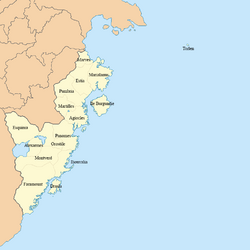
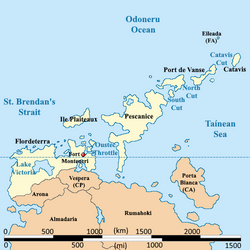
The local administrative body of Burgundie is divided into 30 provinces. They are:
| Name | Capital | Population | Area in km2 | Population density in km2 | Constituent country | Geographic designation |
|---|---|---|---|---|---|---|
| Agiocles | Reimont Gillete | 18,441,850 | 91,685.579 | 201.14 | N/A | |
| Alcairet | Port Genjareb | 12,400,550 | 87,204.9 | 142.2 | Burgoignesc Audonia | |
| Alexarmes | Galantinie | 4,558,310 | 58,430.132 | 78.01 | N/A | |
| Antilles | Cruxendale | 1,207,204 | 24,682.59 | 48.91 | Burgoignesc Audonia | |
| Argaea | Le Havre | 214,390 | 604,762.224 | .35 | Polar Burgundies | |
| Catavis | TBD | 915,936 | 6164.171 | 148.59 | N/A | |
| Chaukhira | Abu-Ouncanobi | 1,254,493 | 9,090.858 | 138.00 | Burgoignesc Audonia | |
| Drusla | TBD | 3,737,346 | 27,868.272 | 134.11 | N/A | |
| Esquinia | Ieraclienne | 5,053,140 | 177,414.19 | 28.48 | N/A | |
| Estia | TBD | 34,235,367 | 118,181.16 | 289.69 | N/A | |
| Flordeterra | Drovan | 35,088,050 | 224526.069 | 156.28 | N/A | |
| Ile Burgundie | Vilauristre | 21,377,130 | 62,936.711 | 339.66 | N/A | |
| Ile Plaiteaux | TBD | 2,346,457 | 21755.900 | 107.85 | N/A | |
| Iles Evangeline | Port Capelan | 1,485,556 | 25,666.78 | 57.88 | Burgoignesc Audonia | |
| Iliouvalia | Rhorres | 18,441,850 | 76,171.55 | 242.11 | N/A | |
| Marialanus | Stearlinge Arch | 37,358,130 | 129,085 | 289.41 | N/A | |
| Martilles | Maloria | 16,274,370 | 69,074.983 | 235.60 | N/A | |
| Marves | TBD | 12,758,960 | 44,496 | 286.74 | N/A | |
| Montverd | Liothea | 17,940,040 | 151,358.91 | 118.53 | N/A | |
| Nauta Normand | TBD | 142,960 | 854.696 | 167.26 | Polar Burgundies | |
| Orostile | Ellisina | 3,740,630 | 23,413.49 | 159.76 | N/A | |
| Panomes | Ierames | 22,926,020 | 129,136.81 | 177.53 | N/A | |
| Pescanice | TBD | 15,546,680 | 173736.402 | 89.48 | N/A | |
| Port de Vanse | TBD | 4,858,164 | 34679.940 | 140.09 | N/A | |
| Province of Faramount | Gameroun | 47,346,345 | 308,907.882 | 153.27 | N/A | |
| Pumbria | Coryna | 38,356,020 | 131,545.5 | 291.58 | N/A | |
| Sudmoll | Oparo Nui | 218,510 | 1,554 | 140.61 | Polar Burgundies | |
| Torlen | New Torleans | 170,220 | 543.898 | 312.96 | Burgoignesc metropole | |
| Wintergen | Hivernille | 719,990 | 5,775.673 | 124.66 | Polar Burgundies | |
| Lacliona | Albonne | 3,324,869 | 60,191.324 | 55.24 | N/A | |
| Port de Vent | Ville Port de Vent | 11,302,230 | 62,366.913 | 180 | Polar Burgundies |
Country Government

| Name | Capital | Population | Area in km2 | Population density in km2 |
|---|---|---|---|---|
| Vilauristre | 21,377,130 | 62,936.71 | 339.66 | |
| TBD | 180,350,717 | 713,205.03 | 252.8735902 | |
| Gameroun | 104,142,530 | 883,755.75 | 117.8408514 | |
| Fort Monteneri | 58,755,287 | 460,862.482 | 127.4898463 | |
| TBD | 29,116,103 | 822,502.533 | 35.3994083 |
Constituent Countries
Ile Burgundie
| This article is part of a series on the |
| Ile Burgundie |
|---|
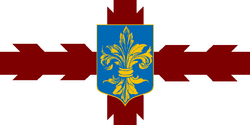 |
| Statistics |
|
| Key topics |
| Subdivisions/cities |
|
Burgundie portal |
Nostrestran
| This article is part of a series on the |
| Nostrestran |
|---|
 |
| Statistics |
|
| Key topics |
| Provinces |
|
Burgundie portal |
Faramount
| This article is part of a series on the |
| Faramount |
|---|
 |
| Statistics |
|
| Key topics |
| Provinces |
|
|
Burgundie portal |
Equatorial Ostiecia
| This article is part of a series on the |
| Equatorial Ostiecia |
|---|
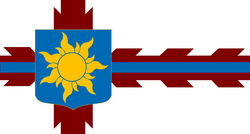 |
| Statistics |
|
| Key topics |
| Provinces |
|
Burgundie portal |
Burgoignesc Overseas Representative Assembly
| This article is part of a series on the |
| BORA |
|---|
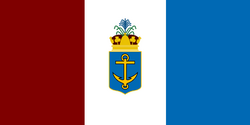 |
| Statistics |
|
| Key topics |
| Provinces |
|
Burgundie portal |
The Burgoignesc Overseas Representative Assembly (BORA) is the Constituent Country Equivalent that includes the provinces of Alcairet, Antilles, Argaea, Chaukhira, Nauta Normand, Port de Vent, Sudmoll, Torlen, Wintergen, and the candidate jurisdiction Iles Evangeline. BORA functions just like all of the other constituent countries of Burgundie and the islands it oversees have the same relationship to it that the provinces of the other constituent countries have to the country-level government. It is held separate from the other constituent countries because they share the common issues held living on islands far from the Burgoignesc Metropole. So, while it is culturally and geographically the most disparate constituent country in Burgundie it is one of the most unified political bodies due to the shared experiences of the constituents.
Legislative Branch

The Citizens Court of the National Assembly (Burg. La Assemblee de Ciutadans de l'Assemblee Nacional, ACAN) is the unicameral legislator of Burgundie. It makes federal law, declares war, approves treaties, has the power of the purse, and has the power of impeachment, by which it can remove sitting members of the government. The Assembly has three seats for each province, one for the Colonial Office, 10 for the clergy, 10 seats reserved for municipal leaders, 10 for a rota of private business leaders and three seats available to foreign interests who would like to be heard. On 6 occasion throughout the year 10 more seats are opened to the public to debate topics that are not on the annual legislative agenda.
While all members can be heard, only the provincial representatives are able to vote on binding laws.
The proceedings of the Assembly are managed by the Sergeant-Parliamentarian and the Sergeant-at-Arms to whom great power is afforded to maintain order and expedient discourse.
Members of the Assembly further divide themselves into various committees and working groups to better address certain issues. The Assembly also maintains its own library, research, and budgetary institutes as well as a small police and intelligence department.
ACAN meets in the House of the People (Burg: Maison della Peuple).
Executive Branch
-
Royal Flag of Burgundie
-
Mantle and Pavilion of Burgundie
-
Crown of Burgundie
-
Palace of the Alvariennes
-
Scepter and orb
-
Palace of the Principality of Faramount
The Court of St. Alphador is the executive branch in Burgundie. The Great Prince is the commander-in-chief of the military, can veto legislative bills before they become law (subject to Golden Council of Ten override), and appoints the members of its Cabinet and other officers, who administer and enforce federal laws and policies.
The great prince's cabinet is called the Golden Council of Ten. The Household Guard is technically responsible directly to the Court of St. Alphador, but ostensibly reports to the Chief of Staff of the Army of Burgundie.
Great Prince of Burgundie
Main article: Pasqual I
Crown Prince of Burgundie
Main article: Crown Princess Amelia
Palace of the Alvariennes
Started by ____ in 1729, the Palace of the Alvariennes is considered to be the first Burgoignesc buildings and act of culture as it employed craftsmen from most of modern Burgundie and it was an image to the Derians of the coast and the wealth and culture they had amassed as part of the Burgoignesc colonial empire as separate from the Derians of the interior.
It is named for the Alvarus dynasty whose kingdom encompassed Ile Burgundie, Nostrestran, and parts of coastal Lapody in the 6-10th century.
Judicial Branch
The Lazarine Court is the supreme court of terrestrial Burgundie. It serves as the ultimate legal power in the hierarchy of provincial and municipal courts. The Justices Lazarine are nominated by the Golden Council of Ten, reduced to three candidates and then appointed by the Great Prince. The Lazarine Court sees 30 cases a year, interpret laws, offer legal commentary and overturn unconstitutional laws.
Maritime Prefecture
The Maritime Prefecture of Burgundie is the supreme court of maritime Burgundie. It is the ultimate legal power in the legal hierarchy of ship's captains, the Martial Court of the Navy of Burgundie, and any other body dispensing justice in the Burgundian maritime claims. The Commodore Justice is nominated by the Golden Council of Ten, reduced to three candidates and then appointed by the Great Prince. The Maritime Prefecture sees cases, interprets laws, and proposes unconstitutional laws to be overturned by the Lazarine Court. While the Maritime Prefecture is not subordinate to the Lazarine Court, the Consitution of Burgundie is considered a terrestrial document and therefore outside of the jurisdiction of the Commodore Justice. Alternatively, the Lazarine Court is not permitted to pass judgment on cases that will impact Maritime Law without the approval of the Maritime Prefecture.
The Maritime Prefecture (Burg: Prefecture maritime) exercises the following coordinating authority in Burgoignesc littoral waters:
- coastal defense
- maritime safety
- customs and migration enforcement
As civil servants, the officers report to the Commodore Justice. However, since the Maritime Prefecture oversees security operations, and thus, also reports to the Chief of the Staff of the Security Forces.
The office and dignity was created in 1874 to unify the command of harbors (civil administrator) and the command of the Navy (Admiral).
The Prefectus marítim is in charge of the Burgoignesc sovereignty at sea, monitoring operation, safety of the users, police and rescue operations, etc. The prefect also commands all armed vessel harbored in their prefect.
The present Prefectures marítimes are:
- Albion Sea and Kilikas Sea, (Soix, Nauta Normand): Admiral Michel-Edouard d'Afraine
- Ocean of Cathay, (Sudmoll): Rear Admiral Elodie Marchon-Bliesee
- Levantine Ocean, (Vilauristre): Rear Admiral Portia Jeanieuse
- Odoneru Ocean, (Drovana): Rear Admiral Anthonie Remique-Faxon
- Omnium Ocean, (Argaea): Rear Admiral Daria-Roxana Turel Ravaxi
Ministries
Interior
Security Services Bureau
Territorial Cohesion and Relations with Local Government
National Emergency Management Agency
The National Emergency Management Agency Burg: Agencie des Gestion des Crises Nacional (AGCN)) is the national coordinating agency in the response to and recovery from a disaster that has occurred in Burgundie and that overwhelms the resources of constituent country authorities. It is the successor to the Civil Defense Authorities of the constituent countries of Burgundie.
Transportation and Infractructure
Maritime Administration Agency
- regulating shipping
- awarding subsidies for construction and operation of merchant vessels
- administering subsidy programs
- maintaining the national defense reserve merchant fleet
- setting the curriculum for maritime academies and awarding diploma's/ratings to students who have completed the requirements of graduation
Ecological Transition
Ministry of External Affairs
Secretariat of Civil Defense and Security
Main Article: Burgoignesc Security Forces
Veterans Services
Overseas Office
Global Improvement
The Global Improvement Branch (GIB-MEA) is the arm of the Ministry of Exterior Affairs tasked with improving the world in terms of how it can positively impact Burgundie. While it is a selfish objective Global Improvement is the branch of government associated with helping to improve global living standards, wages, and reducing/eradicating pandemic diseases. The Branch was created in 1994 to bring together disparate offices and departments from across the Ministry of the Interior, External Affairs, and Revenue that all dealt with improving the lives of those outside of Burgundie.
For a list of programs that the GIB-MEA supports, participates in, and administers see Burgundie's Current Diplomatic Posture.
Economy, Finance, and the Recovery
Internal Revenue
Trade
National Railroad Administration
National Railroad Administration of Burgundie (Burg: Administration nationale des chemins de fer de Burgundie (ANCFB))
Satellite Service
The Burgoignesc Satellite Service (Burg: Service Satellit de Burgundie) is an agency of the Department of Trade. It is responsible for the development, research, contracting, launch, and maintenance of the government owned satellites of Burgundie. It is also the regulatory body for private sector satellites. The Agency was formed in the late 1950s as the possibilities of satellite aided navigation on the high seas became more evident and attainable. The program initially set out to create its own independent space program, which is achieved by licensing some Urcean and Fiannrian rocket designs which it hired local firms to create. A launch site was laid out on Port de Vent and initial tests went well. By 1964 it was determined that Burgundie could not keep up with the rapid advance of rocketry development and cancelled its attempts at creating an organic capability, instead signing agreements with Urcea and Fiannria to rent space on their rockets to deliver global positioning system (GPS) satellites, as well as give access to the GPS data. As the precision of satellites increased the goals of Fiannria and Burgundie diverged and Burgundie began to rely more heavily on Urcea. By the mid-1980s the frequency of Burgoignesc satellite launches was 1 in 4 of every Royal Orbital Service and Space Command launch and a more permanent solution needed to be found. A mechanism was created wherein the Burgoignesc Satellite Service was effectively absorbed into the Royal Orbital Service and Space Command. This agreement served as the basis for the agreement that would later create a singular Levantine Union space program.
Using this new collaborative mechanism, in the late 1980s and early 1990s, Burgoignesc astronaut candidates began training in Urcea. In 1994, Flight Commander (Burg: Ale Ijetes) Vincens-Journeay Emersende Draiselle became the first Burgiognac in space. Since that time the astronauts of Burgundie have maintained an almost constant presence on Urcea or international space stations conducting scientific research on behalf of the global community.
The Burgoignesc Satellite Service operates a massive array of mapping, communications, and navigation satellites. The data provided by these satellites are available globally. A smaller number of military observation satellites are maintained, but are part of a wider network of Royal Orbital Service and Space Command military satellites and are not intended to operate independently.
Fair Practice
Labor, Employment and Economic Inclusion
Health and Societal Justice
The health and Equity portfolio oversees the health care public services and the health insurance part of the Social Security of Burgundie, as well as pensions, and civil rights.


